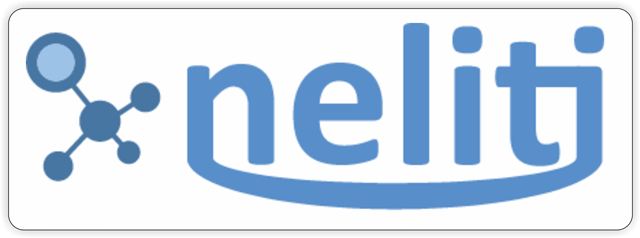Application of Teaching Methods (Ball Reflection to the Wall, Throwing Machine, in-pairs) and Eye Coordination to Increase the Drive Beating Skills on Tennis
(1) Faculty of Sports Science, Universitas Negeri Makassar
(2) Faculty of Sports Science, Universitas Negeri Makassar
(*) Corresponding Author
DOI: https://doi.org/10.26858/est.v6i2.12585
Abstract
This experimental study aims to determine differences in teaching methods and eye and hand coordination of drive punch skills in playing tennis. The teaching method is divided into three, namely teaching the reflection of the ball to the wall, teaching the throwing machine, and teaching in pairs. This research was conducted at Faculty of Sports Science, Universitas Negeri Makassar. This research applied experimental method using a 2x3 factorial design. The sample of this research consist of sixty students, they are divided into six groups that consist of ten people each. The data analysis technique was the analysis of variance (ANOVA) and continued with the Tukey test at the significance level α = 0.05. The three teaching methods in this study have different influences on the drive skills in playing tennis. This research shows that in order to improve the drive skills in playing tennis, it is necessary to involve hand-eye coordination factors in which the physical condition elements mentioned above. A better influence compared to the method of teaching bounce ball to the wall and the throwing machine teaching method on the drive punch skill in playing tennis. Based on the findings in this study, it is expected to have implications for the development of teaching methods to improve punch drive skills in playing tennis.
Full Text:
PDFReferences
Becker, K. A., & Fairbrother, J. T. (2019). The use of multiple externally directed attentional focus cues facilitates motor learning. International Journal of Sports Science & Coaching, 14(5), 651–657.
Bompa, T. O. (1994). Theory and methodology of training: the key to athletic performance. Kendall hunt publishing company.
Bompa, T. O., & Buzzichelli, C. (2018). Periodization-: theory and methodology of training. Human kinetics.
Bucher, E., & Hernández, M. (2016). Beyond bouncing the ball: Toddlers and teachers investigate physics. YC Young Children, 71(3), 17.
Carrera, M., & Bompa, T. (2007). Theory and methodology of training: General perspectives. Psychology of Sport Training, 19–39.
Coker, C. A. (2017). Motor learning and control for practitioners. Routledge.
Haerens, L., & Tallir, I. (2012). 12 Experimental research methods in physical education and sports. Research Methods in Physical Education and Youth Sport, 149.
Hughes, J. A., & Sharrock, W. W. (2016). The philosophy of social research. Routledge.
Jenkins, S. P. R. (2005). Sports Science Handbook: I-Z. Retrieved from https://books.google.co.id/books?id=6ZwlbDxHK_UC
Jia, W. (2019). Inquiry Teaching Method and Its Application in College Tennis Teaching.
Jonath, U., & Krempel, R. (1981). Konditionstraining: Training, Technik, Taktik. Rowohlt-Taschenbuch-Verlag.
Kal, E., Prosée, R., Winters, M., & Van Der Kamp, J. (2018). Does implicit motor learning lead to greater automatization of motor skills compared to explicit motor learning? A systematic review. PloS One, 13(9).
Kerstajn, R., Lupo, C., Capranica, L., & Capranica, L. (2018). Motivation towards sports and academics careers in elite winter sport Slovenian and Italian athletes: The role of internal and external factors. Ido Movement for Culture. Journal of Martial Arts Anthropology, 18(2), 29–37.
Kirk, D., MacDonald, D., & O’Sullivan, M. (2006). Handbook of physical education. Sage.
Kolman, N. S., Kramer, T., Elferink-Gemser, M. T., Huijgen, B. C. H., & Visscher, C. (2019). Technical and tactical skills related to performance levels in tennis: A systematic review. Journal of Sports Sciences, 37(1), 108–121.
Law of the Republic of Indonesia. (2005). Law of the Republic of Indonesia Number 3 of 2005 concerning the National Sports System. Presiden RI, pp. 1–53.
Levine, G., & Parkinson, S. (2014). Experimental Methods in Psychology. Retrieved from https://books.google.co.id/books?id=yx8BAwAAQBAJ
Lewis, E. J., & Barberi, S. J. (2019, April 9). Ball throwing machine and method. Google Patents.
Magill, R. A. (2011). Motor Learning and Control: Concepts and Applications. Retrieved from https://books.google.co.id/books?id=MHJ2QgAACAAJ
McCrone, K. (2014). Sport and the Physical Emancipation of English Women (RLE Sports Studies): 1870-1914. Routledge.
Myers, N. D., Lee, S., & Kostelis, K. T. (2018). Measurement in physical education and exercise science: A brief report on 2017. Measurement in Physical Education and Exercise Science, 22(1), 1–10.
Pittman, A. M., & Jernigan, S. S. (1962). The Funtastic Way to Tennis. Journal of Health, Physical Education, Recreation, 33(2), 32–33.
Pluim, B. M., Groppel, J. L., Miley, D., Crespo, M., & Turner, M. S. (2018). Health benefits of tennis. British Journal of Sports Medicine, 52(3), 201–202.
Schmidt, R. A., Lee, T. D., Winstein, C., Wulf, G., & Zelaznik, H. N. (2018). Motor control and learning: A behavioral emphasis. Human kinetics.
Siswoyo, D. (2013). Philosophy of education in Indonesia: Theory and thoughts of institutionalized state (PANCASILA). Asian Social Science, 9(12), 136.
Article Metrics
Abstract view : 448 times | PDF view : 1 timesRefbacks
- There are currently no refbacks.
Copyright (c) 2020 Yasriuddin Yasriuddin, Muh adnan hudain

This work is licensed under a Creative Commons Attribution-NonCommercial 4.0 International License.
Editorial Office
Journal of Educational Science and Technology
Graduate Program Universitas Negeri Makassar
 |
| Jl Bonto Langkasa Gunungsari Baru Makassar, 90222 Kampus PPs UNM Makassar Gedung AD Ruang 406 Lt 4, Indonesia | |||
| jurnalestunm@gmail.com | est.journal@unm.ac.id | |||||
| https://ojs.unm.ac.id/JEST/index | |||||
| 085299898201 (WA) | |||||
EST Index by:
























